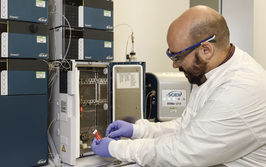A buyer's guide to protein stability measurement platforms

contributed by Malvern Panalytical |
Protein stability analysis technologies for the biopharmaceutical industry
Abstract
Characterizing biopharmaceutical protein stability is critical during all phases of biopharmaceutical development, including candidate selection, preformulation screening and formulation development, process development, and manufacturing support. Protein stability and higher order structure is also used to assist with biocomparability studies. This buyer's guide discusses the available instrumentation for protein stability characterization, and what to consider when choosing stability assays.
Overview
Most biotherapeutics are proteins or protein derivatives, and the single biggest class of biopharmaceuticals currently on the market or in development are monoclonal antibodies (mAbs). The specific binding nature of antibodies has provided opportunity for the biopharmaceutical industry to use them to modulate the activity of pharmaceutically-relevant target molecules in order to control or prevent disease.
A key difference between traditional small molecule pharmaceuticals and biopharmaceuticals is that the latter need to be processed and delivered in liquid form. Proteins are notoriously unstable in solution, so approaches need to be developed whereby these biotherapeutic molecules can be manufactured and stored for long periods in solution without degrading. This is where protein stability assays have proved invaluable in the development and manufacture of biotherapeutics.
Clearly, real-time stability assays are required to assess the longevity or shelf life of a protein in solution. However, these are often time-consuming, so faster, predictive methods have been established to accelerate the learning process from which stable biologic drug formulations and process conditions can be developed.
Most common among these predictive approaches are thermal unfolding methods which monitor physical properties of the protein as a function of temperature. Using these data, the temperatures at which a protein undergoes conformational changes can be determined and used for comparative studies. It is assumed that molecules which require higher temperatures to induce conformational changes have a longer shelf life or are more stable. However, there are some important exceptions to this that will be explained later in this document.
Unfolding or thermal stability profiles can be obtained for different drug candidates in the same buffer to compare the intrinsic stability of potential biotherapeutics under a given set of conditions. This application is termed ‘Candidate Selection’.
Log in or register to read this article in full and gain access to The Medicine Maker’s entire content archive. It’s FREE!



















